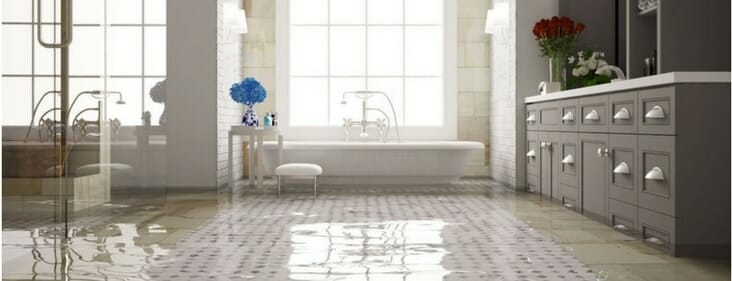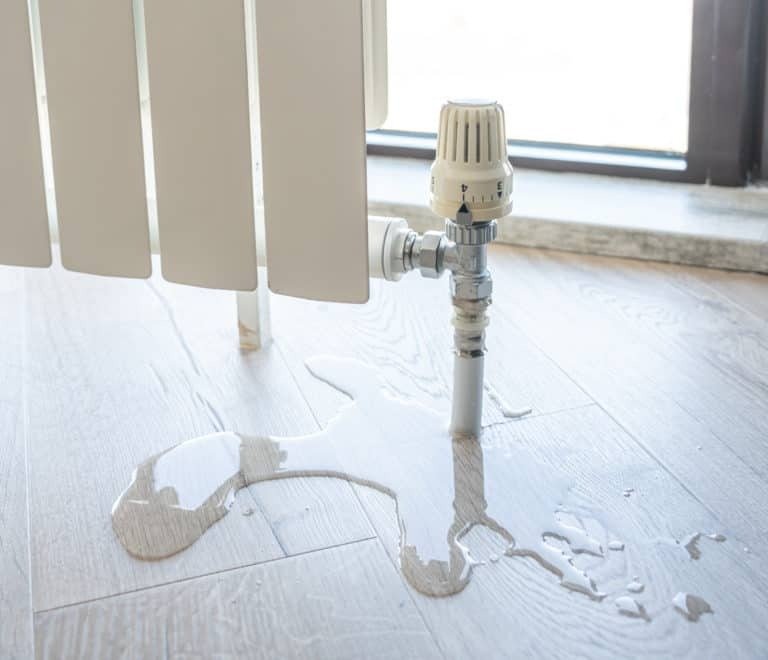Reasons Behind of Moisture Harm in the Bathroom
Reasons Behind of Moisture Harm in the Bathroom
Blog Article
Here in the next paragraph you can locate a bunch of decent data involving How to Repair and Prevent Bathroom Water Damage?.

Water damage frequently happens in the washroom due to the water made use of everyday. Occasionally, the damage could be a little mold from the shower. Other times, it's massive damage on your floor. Whatever it is, it is always great to understand the reason and also stop it before it happens.
This guide will go through several of the usual reasons for water damage in the restroom. We will likewise examine what you can do to prevent these reasons from harming your shower room. Let's dive in.
5 Typical Reasons For Water Damage in Bathrooms
These are the common factors you would have water damage in your shower rooms as well as how you can spot them:
Ruptured or Leaking Pipes
There are many pipelines lugging water to different parts of your restroom. Some pipelines take water to the bathroom, the sink, the taps, the shower, and many various other locations. They crisscross the small location of the restroom.
Every now and then, these pipes might obtain rustic as well as ruptured. Various other times, human activity could cause them to leakage. When this takes place, you'll discover water in the edges of your shower room or on the wall.
To find this, look out for bubbling wall surfaces, mold and mildews, or mold. Call an expert emergency plumbing to repair this when it occurs.
Fractures in your wall surface ceramic tilesv
Washroom wall floor tiles have been specifically made for that purpose. They safeguard the wall surface from dampness from individuals taking showers. However, they are not unbreakable.
Sometimes, your restroom wall ceramic tiles fracture as well as enable some wetness to leak into the wall. This could potentially damage the wall surface if you do not take any type of action. If you discover a crack on your wall floor tiles, repair it quickly. Do not wait until it damages your wall surface.
Overflowing commodes and sinks
As humans, in some cases we make mistakes that could cause some water damage in the bathroom. As an example, leaving your sink tap on might cause overruning and also damages to other parts of the washroom with moisture.
Also, a defective bathroom could trigger overruning. As an example, a damaged bathroom handle or various other parts of the cistern. When this occurs, it can harm the flooring.
As quickly as you notice an overflowing sink or commode, call a plumber to aid take care of it quickly.
Roof Leaks
Often, the trouble of water damage to the restroom may not originate from the restroom. As an example, a roofing system leakage could create damages to the shower room ceiling. You can identify the damages done by taking a look at the water discolorations on the ceiling.
If you find water discolorations on your ceiling, examine the roofing system to see if it's harmed. Then, call a professional to aid fix the concern.
Excess Wetness
It's great to have that long shower as well as splash water while you dance around and also act like you're carrying out, however in some cases these acts can cause water damage to your washroom.
Splashing water around can create water to visit edges and also develop mold and mildews. View exactly how you spread out excess moisture around, and also when you do it, clean it up to stop damage.
Final thought
Water damage to your shower room can be bothersome. However, you can manage it if you protect against several of the causes stated in this overview. Call an expert emergency plumbing professional if you observe any severe damage.
How to Repair a Water-Damaged Wall in the Bathroom
All you need to know to repair bathroom wall water damage – from identifying the water source to finishing the repair professionally. If you don’t act quickly to resolve a water damage problem, you could find that it develops into a mold issue and/or cause structural damage to your home. Follow this guide to repair your bathroom before it's too late.
All you need to know to repair bathroom wall water damage
Water damage is a common household problem, and one that, if left unrepaired, can quickly lead to structural problems and health issues. The two most likely rooms where water damage may occur is the bathroom and the kitchen – where water is used often and there is high humidity.
What is water damage?
It is easy to think of water damage as caused by a flood or leaking tap or burst water pipe. However, when water damage is assessed, there are three main categories into which water falls (as classified by the American National Standards Institute). These categories are defined as:
Category 1 Water – ‘Clear Water’
This is sanitary water. There is usually no major threat to health by washing with this water, drinking it, or inhaling if it is streaming. Most water that enters your home will be category 1 water, while most water leaving your home will be either category 2 or 3 water. It may also come from melting snow, rainwater and water tanks.
Damage caused by this type of water can usually be repaired or restored, though this doesn’t mean that there are no potential health issues.
Category 2 Water – ‘Grey Water’
This is contaminated water – sometimes considerably so – and will cause illness if consumed or if it comes into contact with your skin. Water damage in this category is often caused by overflows from toilet bowls, and damage to washing machines and dishwashers. While damaged items might still be repaired or restored after damage by grey water, it is more difficult and more expensive to do so.
If the water damage in your home has been caused by grey water, it is advisable to have repairs made by professionals.
Over time, grey water will deteriorate and become black water.
Category 3 Water – ‘Black Water’
Category 3 water, also known as black water, is highly contaminated and a great risk to health. This may contain raw sewage, heavy metals, and other toxic substances. It will smell terrible.
If this is the water that has caused damage in your bathroom, do not touch it. Stop the water flowing if possible, seal the room and call the experts: it really isn’t worth the risk of ill health and disease that could be fatal. It is very unlikely that items can be repaired or restored if they have been damaged by black water.
https://www.porterscleaning.com/blog/how-to-repair-a-water-damaged-wall-in-the-bathroom/

How to Repair a Water-Damaged Wall in the Bathroom
All you need to know to repair bathroom wall water damage – from identifying the water source to finishing the repair professionally. If you don’t act quickly to resolve a water damage problem, you could find that it develops into a mold issue and/or cause structural damage to your home. Follow this guide to repair your bathroom before it's too late.
All you need to know to repair bathroom wall water damage
Water damage is a common household problem, and one that, if left unrepaired, can quickly lead to structural problems and health issues. The two most likely rooms where water damage may occur is the bathroom and the kitchen – where water is used often and there is high humidity.
What is water damage?
It is easy to think of water damage as caused by a flood or leaking tap or burst water pipe. However, when water damage is assessed, there are three main categories into which water falls (as classified by the American National Standards Institute). These categories are defined as:
Category 1 Water – ‘Clear Water’
This is sanitary water. There is usually no major threat to health by washing with this water, drinking it, or inhaling if it is streaming. Most water that enters your home will be category 1 water, while most water leaving your home will be either category 2 or 3 water. It may also come from melting snow, rainwater and water tanks.
Damage caused by this type of water can usually be repaired or restored, though this doesn’t mean that there are no potential health issues.
Category 2 Water – ‘Grey Water’
This is contaminated water – sometimes considerably so – and will cause illness if consumed or if it comes into contact with your skin. Water damage in this category is often caused by overflows from toilet bowls, and damage to washing machines and dishwashers. While damaged items might still be repaired or restored after damage by grey water, it is more difficult and more expensive to do so.
If the water damage in your home has been caused by grey water, it is advisable to have repairs made by professionals.
Over time, grey water will deteriorate and become black water.
Category 3 Water – ‘Black Water’
Category 3 water, also known as black water, is highly contaminated and a great risk to health. This may contain raw sewage, heavy metals, and other toxic substances. It will smell terrible.
If this is the water that has caused damage in your bathroom, do not touch it. Stop the water flowing if possible, seal the room and call the experts: it really isn’t worth the risk of ill health and disease that could be fatal. It is very unlikely that items can be repaired or restored if they have been damaged by black water.
https://www.porterscleaning.com/blog/how-to-repair-a-water-damaged-wall-in-the-bathroom/
Do you enjoy more info about How to Repair and Prevent Bathroom Water Damage?? Place a short review down below. We'd be glad to listen to your views about this piece. We hope to see you back again in the near future. Those who liked our blog post plz make sure you remember to share it. Thanks so much for your time spent reading it.
Sink issues? Connect. Report this page